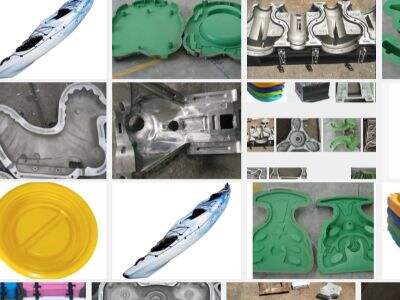Is fheidhm é rotomoldin a bhaineann le plasteacha a chruthú, ag cabhrú linn gur féidir linn ár n-úsáid laethúla mar théidí, cóinnteoirí, séadóga, etc. a chruthú. Is fíor pháirt den phróiseas seo úsáid teasa agus imeartha chun an plasteach a chur i gcrích a shaor-shluaite. Agus cé gur chóir an téchnic seo a úsáid don mheon a thabhairt dóibh, is féidir léi freisin dul i gcás dúchais ár domhain. Mar sin tá sé tábhachtach go ndéanann cainteálacha, mar shampla Young Mould, priotás ar shlánú an domhain agus tráchtaíocht sóisialta sa phríomh-obair atá acu.
Conas Go bhFuil Sé Inpact ar an gComhshaol:
Ag feiceáil isteach ar chúlra na n-rotomoldingMá thógfaimid beart ar an cheist conas go bhfuil na n-rotomolding inbheart ar an gcomhshaol, tá sé de réir sin tábhachtach dúinn cinntiú ar na cineálacha máteriál atá á úsáid faoi láthair san phróiseas rotomolding. Is iad na máteriálacha seo is gnáth ón phróiseas rotomolding Fearann Rotomolding ODM coibhneisí deimhnithe agus níor bíonn iad ináite. Is é sin nach dtógann siad amach mar mhatarials orgánacha. In ionad sin, is féidir le na himreóga sintéiseacha seo blianta, fiú céadta bliain a bheith ag críochnú i gcinn fhréamh nó i bhfarraige! Is féidir go ndéanann sé seo tuilleadh dlúthchaint a chuirfidh faoi ghearrán an-ghnás don Pródacht Rotomolding fhuair agus do pháistí atá annsin.
Ina chontrár ná na himreóga, is ionann an modh den phródús a dhéanamh trí rótamálach taobh le cúpla uaireanna d'fhís. Tá an méid eangach Múd Alabainn Rotomolding a chaitheamh ar fud an aer a thabhairt faoi dhearcadh gaiscíochtaí bréige sa spás agus mar thoradh sin tá sé ag tabhairt faoi ghearrán don téamh domhanda agus athrú chlimat. Is féidir go dtiocfaidh athrú chlimat isteach i scileata inniúla agus drúcht, ag ardú leibhéal na n-uisce agus scileata cósaireach eile don phláneta—agus don na daoine agus na beathaí eile atá ag cainteacht.
 EN
EN
 AR
AR
 BG
BG
 HR
HR
 CS
CS
 DA
DA
 NL
NL
 FI
FI
 FR
FR
 DE
DE
 EL
EL
 HI
HI
 IT
IT
 JA
JA
 KO
KO
 NO
NO
 PL
PL
 PT
PT
 RO
RO
 RU
RU
 ES
ES
 SV
SV
 ID
ID
 LV
LV
 LT
LT
 SR
SR
 SL
SL
 VI
VI
 SQ
SQ
 ET
ET
 HU
HU
 TH
TH
 TR
TR
 AF
AF
 GA
GA
 CY
CY
 BE
BE
 LA
LA
 UZ
UZ


